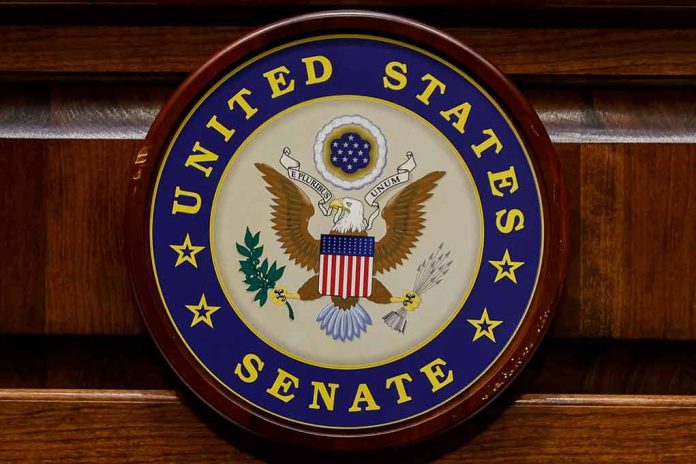
The upcoming elections are set to pose a critical challenge for the current Democratic Senate majority as the Republican Party positions itself to reclaim control.
At a Glance
- Republican candidate Tim Sheehy leads Democratic incumbent Jon Tester in Montana.
- Republicans need two additional seats to regain Senate control.
- GOP incumbents Ted Cruz and Rick Scott are ahead in their respective races.
- Joe Manchin’s retirement from West Virginia aids the Republican momentum.
Republicans Eye Senate Majority
In the battle for Senate control, Republicans need to win merely two additional seats to regain a majority from the Democrats, who currently maintain a 51-seat control. GOP candidates are gaining momentum, particularly in key states like Montana, Texas, and Florida, reflecting favorable polling. Critical to this shifting landscape is Tim Sheehy, a Republican candidate showing a strong lead over incumbent Democrat Jon Tester. Such a shift indicates potential strategic gains for the Republican Party.
Democrats could lose control of US Senate – NYT
A Republican challenger in Montana has surged ahead in the pollshttps://t.co/IDhmurlVAt pic.twitter.com/U7vI8Cx54G
— RT (@RT_com) October 11, 2024
One advantage for Republicans is the pivotal retirement of Democratic Senator Joe Manchin from West Virginia, which considerably enhances GOP prospects. Meanwhile, in Florida and Texas, incumbents Rick Scott and Ted Cruz, respectively, have secured optimistic forecasts. According to recent surveys, Cruz leads his challenger by a margin of four points. In the Sunshine State, Rick Scott holds a nine-point lead over his Democratic opponent.
Challenging Races and Strategic Implications
Tim Sheehy, a newcomer and former Navy SEAL, commands a clear 52% to 44% lead in Montana, his business acumen proving beneficial in political warfare against seasoned incumbent Tester. Additionally, the competitiveness of several other Democratic-held seats poses significant risks to the current Senate majority. The Cook Political Report’s classification of Florida as likely Republican and Texas as leaning Republican signals further Republican inroads.
The remaining uncertainty lies in states like Ohio, Michigan, and Wisconsin. Each holds its own complex dynamics, with tight races featuring both Republican and Democratic incumbents or challengers. Incumbent Ohio Senator Sherrod Brown finds himself embroiled in a neck-and-neck contest against Republican Bernie Moreno. Similarly, competition remains fierce in Wisconsin and Pennsylvania, with closely matched candidates vying for crucial Senate seats.
Political Repercussions and Future Prospects
The retention or shift of Senate control profoundly impacts the incoming presidential legislative agenda, notably affecting executive tasks such as Cabinet appointments and judicial nominations. This tight race reflects the broader national momentum, with states like Nevada witnessing debates over pressing issues like reproductive rights. In Michigan, the race to replace retiring Senator Debbie Stabenow sees Democrat Elissa Slotkin marginally ahead.
The stakes of these elections extend beyond state borders to fundamentally shape U.S. governance in the years to come. Republican strategies, aided by tactical retirements and promising candidates, may very well set the tone for a decisive Senate power shift by 2025. The political landscape bears watching as voters decide the fate of the legislative branch.
Sources:
- Republicans Appear Poised to Take Control of Senate, New Poll Shows
- Republicans Score Triple Senate Boost With America’s Most Accurate Pollster
- The 10 Races That Will Determine Control of the Senate
- The 10 Senate seats most likely to flip in 2024
- GOP almost certain to win Senate with Republican challenger up 8 points in decisive Montana race
- Good News for GOP Senate Incumbents Cruz and Scott, and Challenger Moreno
- 15 Crucial Down-Ballot Races That Could Swing Congress
- Tracking the Senate’s Most Competitive Races
- How Republicans could take the Senate






















